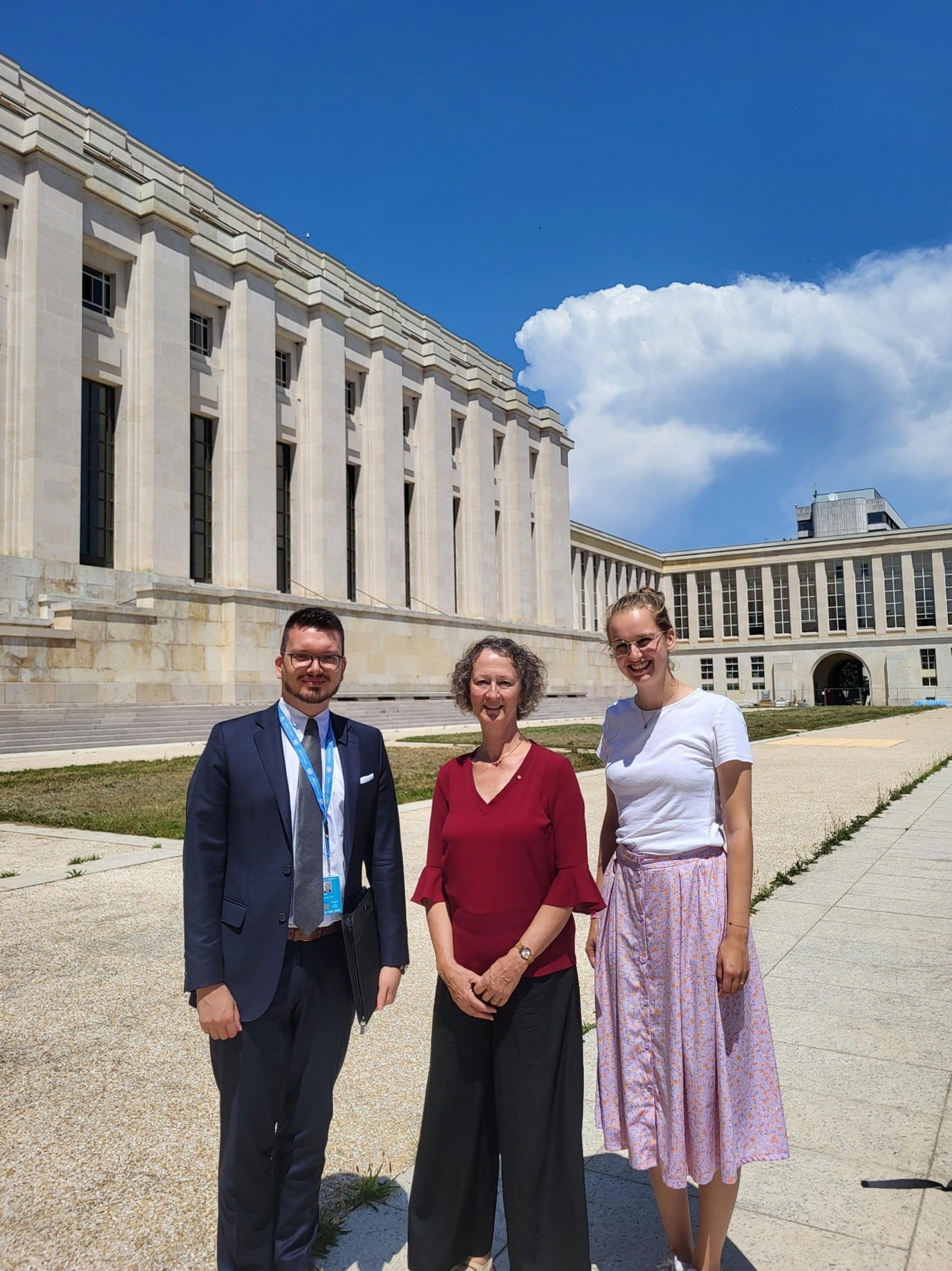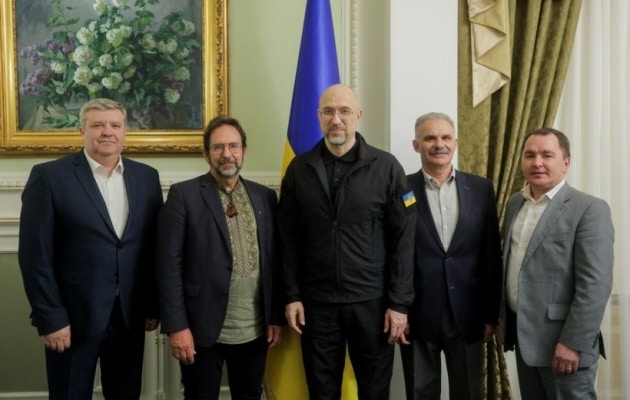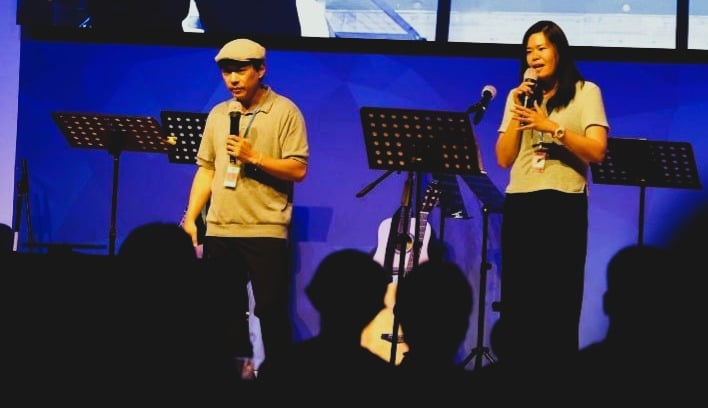This comprehensive posting on the rising ethnic-religious tensions in Bosnia
and Herzegovina consists of two parts: an examination of the present
situation, and an overview of the history that has created its context.
While the recent religious incidents that triggered this posting might seem
to be fairly insignificant, the issues and their potential to inflame
conflict are not. In fact the issues emerging in Bosnia and Herzegovina
today are reminiscent of those that led to war in 1992. When sparks appear
in the midst of an incendiary environment, then regardless of how small they
appear, they must be taken seriously and investigated thoroughly with the
goal of preventing an explosion.
This posting submits that Bosnia and Herzegovina warrants the immediate,
diligent attention of religious liberty monitors, advocates and
intercessors, as well as peace-makers who can recognise romanticism, embrace
realism, and care more about protecting flesh-and-blood than illusory
political ideals.
——————————————————-
BOSNIA: RELIGIOUS TENSIONS RISING
——————————————————-
On 11 August, an explosion damaged the tomb of Bosnia’s 1992-1995 war-time
Muslim President, Alija Izetbegovic.
While portrayed by his Western allies as a moderate, Izetbegovic was
actually an up-front Islamist backed by Iran. His “Islamic Declaration”,
first published in 1970, was republished in Sarajevo in 1990 just as
Yugoslavia was starting to break apart. Izetbegovic was awarded the King
Faisal Award in 1994 and the Figure of the Year in the Islamic World in
2001.
Izetbegovic’s Islamic Declaration clearly expresses his worldview: “There
can be no peace or coexistence between Islamic faith and non-Islamic faith
and non-Islamic institutions. The Islamic movement must and can take power
as soon as it is morally and numerically strong enough, not only to destroy
the non-Islamic power, but to build up a new Islamic one.” And, “Panislamism
always came from the very heart of the Muslim peoples, nationalism was
always imported stuff.”
This is doubtless why, as conflict was escalating in Croatia and Yugoslavia
was tearing apart, Izetbegovic withdrew his signature on 28 March 1992 from
the 18 March 1992 Lisbon Agreement that had been constructed to prevent
conflict in Bosnia by dividing the state into three autonomous entities:
Bosniac, Croat and Serb. Two days after withdrawing his signature
Izetbegovic illegally called for a referendum on secession despite the
objections of the Bosnian Serb minority.
For a critique of Alija Izetbegovic and his role in instigating the Bosnia
conflict see “Alija Izetbegovic, 1925-2003”, by Damjan de Krnjevic-Miskovic,
a Senior Fellow at the Institute on Religion and Public Policy. (Link 1)
Izetbegovic’s tomb is located in the Kovaci (Martyrs) Cemetery in Sarajevo’s
Old Town. Nobody was injured in the bombing, which occurred a little after 3
am, and damage to surrounding buildings was slight. Dejan Anastasijevic
reported from Belgrade for TIME magazine (29 August), “Most Muslims blamed
the Serbs, who for their part insisted that Muslims staged the explosion;
the ongoing investigation has so far proved fruitless.”
The following week, a group of Muslims forced their way into a Serbian
church which has been built on the site of a mosque in eastern Bosnia. (Link
2)
MINOR INCIDENTS – SIGNIFICANT ISSUES
The issues fanning tensions in Bosnia and Herzegovina today bear a striking
resemblance to the issues of 1992 that triggered the Bosnian war. In 1992,
war was triggered by calls from Bosnian Islamists, led by Bosnian President
Alija Izetbegovic, for Bosnia to secede from Yugoslavia and become an
independent, single, undivided state. This would have placed some 1.3
million Bosnian Serb Christians of the Eastern Orthodox tradition under
Muslim and Croat domination in what Islamist openly planned would become an
Islamic State. Serb resistance was met with jihad. Fighting was halted
through the Dayton Accords (December 1995) which created the independent
state of Bosnia and Herzogovina, but divided it into two autonomous
entities: the Muslim-Croat Federation and the Republika Srpska (Serb
Republic), each with its own government, parliament, army and police.
The issue today is that the West led by the US is agitating for
Constitutional reform in Bosnia that will strengthen the central (Muslim
dominated) government at the expense of the entities. Ekrem Krasniqi in
Brussels and Anes Alic in Sarajevo, wrote for ISN Security Watch in November
2005, “In essence, the constitutional changes aim to reverse the
international community’s quick-fix measures to end the war, which entailed
making ethnic division a political reality – a reality that is no longer
feasible in a country hoping to join the EU.” (See ISN’s “Redefining
Bosnia”: Link 3)
While the US is not calling for the dismantling of the Republika Srpska,
some Bosnian Muslim leaders are. Nicholas Wood reports for the New York
Times, “Haris Silajdzic, a Muslim, a former foreign minister and a
presidential candidate, has campaigned against the proposed changes, saying
they would leave the Serbian republic in place. The Serbian entity should be
abolished and absorbed into a stronger Bosnian state, he contends. That
idea, diplomats here say, is unrealistic, but it appeals to nationalist
Muslim voters.” (Link 2)
Prime minister of Republika Srpska (RS), Milorad Dodik, has said he will
never agree to reform police and security forces as demanded by the European
Union as a condition for EU association talks. Serb leaders have responded
to Islamist calls for the abolition of RS by saying that if moves are made
to dissolve RS, then RS will hold a referendum on secession. It is estimated
that around 90 percent of Serbs in RS would vote to secede from Bosnia if a
referendum were held.
Sulejman Tihic, the Muslim member of Bosnia’s three-man rotating presidency
said that Serbs wanting to secede could pack their bags and leave but they
could not take one inch of Bosnian territory with them.
AKI reports: “RS Prime Minister Milorad Dodik retorted that Tihic’s
statement represented a drastic example of ‘hate and chauvinism’ which will
only further inflame ethnic passions in Bosnia. ‘In Tihic’s statement one
can easily recognise an Islamic concept which sees Bosnia as its exclusive
right,’ said Dodik. ‘Serbs are constituent people in Bosnia [and] claim the
same right to the country and to live in it,’ said Dodik.” (Link 4)
The Islamist principle that “Islamic lands” cannot be seceded is why Bosnian
Islamists regard any RS move towards a referendum or secession as
unacceptable and doubtless as grounds for jihad. As in 1992, the Serbs would
rather face jihad rather than be returned to dhimmitude (the subjugated
state of non-Muslims living under Islamic domination).
CONSTITUTIONAL REFORM
The stated aim of the Constitutional reform is to move Bosnia from
“stabilisation” to “transition”. The Dayton Accords which ended the
1992-1995 war stabilised Bosnia by separating warring constituents into two
entities: the Muslim-Croat Federation and the Republiska Srpska. Now, the
West alleges, it is time for Bosnia to transition toward EU membership by
strengthening its State institutions at the expense of the entities.
While the Isl
amists are anxious not to cement any degree of Serb autonomy,
the Serbs are anxious not to lose their autonomy. Most Serbs are concerned
that the Constitutional reform could simply be a slow road towards the
dissolution of RS.
The appeal of Mr Dragan Cavic, the President of Republika Srpska, is simply
that the stability brought by the Dayton Accords’ division of Bosnia should
not be sacrificed in the transition process. “We are committed to success
[of transition into Europe] and we need success, but a clear prerequisite of
our support should be keeping the Dayton’s Entity Status of the Republic of
Srpska within Bosnia and Herzegovina . . . European phase can not replace
the Dayton phase. . . . These two cannot confront each other, they can
supplement each other.” (Link 5)
While economics is the primary subject being openly discussed by EU and US
advocates of constitutional reform, behind the scenes the talk is equally of
unity, democracy, eliminating ethnic divisions, religious tolerance and
other fine-sounding ideals.
ECONOMICS
Bosnia’s present set up of two autonomous entities, each with its own
parliament, government administration, courts, police force and services, as
well as a central government makes for a very expensive system. In fact,
around 60 percent of Bosnia’s GDP is spent simply maintaining state and
entity apparatus, and this is contributing significantly to the weakness of
the Bosnian state.
IDEALISM
The less talked about reason behind the US-led drive for constitutional
reform in Bosnia and Herzegovina is more idealistic. The West still has a
desire to “prove” that Muslims and Christians can live together in
harmonious, tolerant, democratic, golden Islamic societies, as allegedly in
history(!) and in Lebanon(!). And as they will in the new Iraq! It is
important to Europe and the US that this human experiment, which is little
more than a forced marriage, not fail. If the Bosnia experiment fails, then
the prospects for London, Paris and other multicultural, pluralist
democracies with rapidly growing Muslim populations are grim.
A hugely important address on this subject was given by Bat Ye’or on 31
August 1995 at the International Strategic Studies Association’s Symposium
on the Balkan War – “Yugoslavia: Past and Present”. Bat Ye’or’s address,
entitled, “Myths and politics: Origins of the Myth of a Tolerant Pluralistic
Islamic Society”, is essential reading for understanding the politics of and
international ideals behind Bosnia and Herzegovina. (Link 6)
While intended to unite Bosnian Muslims (Bosniacs), Croats and Serbs under
Bosnian nationalism, the proposed constitutional reforms are actually
dividing the constituent peoples. A March 2006 nation-wide survey conducted
by the International Institute for Middle-East and Balkan Studies
(Ljubljana, Slovenia) revealed that only 29.3 percent of those surveyed
supported the constitutional amendments while 59.8 percent disapproved.
(Link 7)
Serbs in the Republika Srpska generally reject the reforms as they
strengthen the Muslim-dominated central authority at the expense of the
entities, lessening Serb autonomy. The Croats also reject the reforms and
are voicing their preference to carve out their own autonomous ethnic
entity. Most Bosniac Islamists either support the reforms or want them to be
more radical because they conform to Islamist aspirations to strengthen the
central (Muslim-dominated) government and extend its powers to all corners
of Bosnia.
But Bosniac Islamists who advocate the forcible abolition of the Republika
Srpska do not do this with shouts of jihad or with the language of Islamic
imperialism. They do this by denouncing ethnic and religious separation and
by extolling the virtues of unity, tolerance and democracy, in much the same
way that Arab nationalism did. They do this by crying victim and saying the
murderous, evil, demonic Serbs should not have any right to self- rule on
“Bosnian” (read “Muslim”) land.
PARLIAMENTARY ELECTIONS: 1 OCTOBER
The proposed constitutional reforms failed to pass a vote in the Bosnian
parliament on 27 April, so further discussion has been put off until after
the 1 October 2006 parliamentary elections. However, constitutional reform
is now an election issue. As the tension and rhetoric escalates,
international voices are calling for calm. (Link 8)
————————————————————
CREATING CONTEXT: HISTORY’S WEDGES
————————————————————
ISLAMIC ERA
>From the early 14th Century to the early 20th Century the Serbs and other
Southern Slavs lived as persecuted dhimmis, cruelly subjugated under the
Islamic imperialism of the Ottoman Empire. During that era most Bosnian
Slavs converted to Islam.
As the Ottoman Empire started to crumble Christian Slavs fought for and won
their liberation from Islamic rule through the Balkan Wars of 1912-1913.
Yugoslavia was created in 1918 as a Kingdom of Serbs, Croats and Slovenes –
all Southern Slavs. But the long history of Islamic repression and
persecution and the trauma of the bloody wars that brought it to an end left
a wedge between Christian Slavs and Muslims.
(Muslim Slavs live predominantly in Bosnia and Herzegovina. They accounted
for 8.9 percent of Yugoslavia in the 1981 census but are around 44 percent
in modern-day Bosnia.)
WORLD WAR TWO
World War Two saw Yugoslavia split apart. The Axis powers annexed modern-day
Slovenia, Croatia and Bosnia and Herzegovenia, creating the fascist state of
Croatia. They also occupied Serbia which was aligned with the Allies. The
“lesser races” – the Serbs, Jews and Gypsies (Romas) – were targeted by the
Nazis for extermination.
Some two million Serbs lived in Croatia at the beginning of WW2. Of that
number, around one million were killed, around half the remainder were
expelled while the other half were forcibly converted to Roman Catholicism
under threat of death. Of the Serbs killed, multitudes were murdered by the
20,000-strong Waffen-SS “Handschar” (scimitar) division. This was
established in Bosnia by SS head, Heinrich Himmler, and the Mufti of
Jerusalem, Haj Muhammad Amin al Husseini, and consisted of Bosnian and some
Albanian Muslims. Around 390,000 Serbs were murdered by the fascist Croat
“Ustasa”, while between 300,000 and 700,000 Serbs, Jews and Romas, including
20,000 known, named children, were executed by Croat forces in Camp
Jasenovac <
The barbarity and horror of the WW2 holocaust in Yugoslavia is concisely
documented at the US Holocaust Memorial Museum <
an excellent search engine). The terror of those days created a deep wedge
between Serbs, and Bosnian Muslims and Croats. Nowhere is this wedge more
evident than in Bosnia where Muslims, Croats and Serbs have lived
interspersed for centuries.
Most Bosnian Serbs have been raised by parents or influenced by grandparents
who are remnant survivors of the Bosniac-Croat attempted genocide of Serbs
during the World War Two holocaust in Yugoslavia.
COMMUNIST ERA
After WW2, Josip Broz Tito’s Partisans, a Communist-led, anti-Axis
resistance movement
, recreated Yugoslavia as a federal republic. Tito drew
the Bosniacs into his Communist Partisan forces and fostered the creation of
Bosnia and Herzegovina as a separate Muslim republic.
Serbs were by far the largest ethnic group in Yugoslavia and Tito, a Croat,
was determined to destroy Serb hegemony. While Tito was hailed for uniting
the warring Slavs under Communism, he actually carved up Yugoslavia,
primarily along ethnic lines, but in a way that deliberately weakened the
Serbs by ensuring that the republics had large Serb minorities. In fact 42
percent of Serbs were left outside Serbia proper. As Tito advanced his
policy of decentralisation, Serb minorities grew anxious. Tito’s carve-up of
Yugoslavia deliberately created artificial, geographical wedges between
Serbs.
ISLAMIST ASCENDENCY
In the early days of the Bosnian war, terrorism expert Yossef Bodansky and
Vaughn S Forrest wrote “Iran’s European Springboard?”, a report for the task
force on terrorism and unconventional warfare, the House Research Committee.
This report is as hugely significant and relevant today as it was in
September 1992. (Link 9)
Bodansky and Forrest describe in detail how Tito’s pro-Arab policies
unintentionally contributed to the radicalisation of Bosnian Muslims as
early as the 1970s. After the Iranian Islamic Revolution, Izetbegovic
“renewed his call to implement his Islamic Declaration, began organising an
Islamist political movement, and within a few years was thrown in jail for
subversion.” By the 1980s Palestinian, Syrian and Iranian groups were using
Yugoslavia as a base of operations, and Bosniacs were undergoing terrorist
and ideological training in Lebanon and Iran.
“Meanwhile,” wrote Bodansky and Forrest in 1992, “Iran has also consolidated
a Muslim leadership network supportive of Tehran’s world view. At the centre
of the Iranian system in Europe is Bosnia-Hercegovina’s President, Alija
Izetbegovic, ‘a fundamentalist Muslim and a member of the Fida’iYan-e Islam
organisation,’ who is committed to the establishment of an Islamic Republic
in Bosnia-Hercegovina.”
According to Bodansky and Forrest, Izetbegovic developed close cultural and
economic ties with Iran. Bodansky and Forrest described the Bosnia War as ”
. . . a proxy battlefield for the future and fortunes of the growing Muslim
community of Western Europe”.
Terrorism experts including Bodansky assert that the Balkans is integral to
Islamist plans for escalation of conflict against Israel, Europe and the
USA. According to the experts, Muslim Slavs are being recruited to a “white
al-Qaeda” (also known as “white devils”) that can be easily deployed for
terror operations in the West. (Link 10)
THE CONSEQUENCE OF UNHEALED WEDGES: DIVORCE
It was the deep and valid fear that Serb minorities had of Muslim and Croat
domination that led Serb minorities in Croatia and Bosnia to react against
Croatian and Bosnian calls for independence and secession. As Yugoslavia
broke apart in the early 1990s, around 2 million Serbs faced the prospect of
living as minorities under Muslim and Croatian rule.
Civil war erupted as Serbs sought to guarantee their future liberty and
security by redrawing the borders to form a Greater Serbia. The Bosniacs and
Croats, not believing a Greater Serbia had a right to exist, fought against
the Serbs to ensure no territory was lost. As is common in war, atrocities
and criminal acts were committed by all sides.
For a Bosniac Islamist such as President Alija Izetbegovic the fight was not
primarily about nationalism but about Islamic lands. This was a jihad for
which they had the support of their allies in Iran, Saudi Arabia and
al-Qaeda. According to Bodansky, on 29 July 1992, Iran’s Ayatollah Ali
Hussayn Khamene’i gave a sermon in which he described the war in Bosnia as a
US-led Western/Christian campaign “against the Islamic wave throughout the
world”, and he exhorted Muslims worldwide to mobilise and join the jihad for
Islam in Europe.
And join they did, by the thousands. The Dayton Accords gave the foreign
mujahideen 30 days to leave Bosnia. However, it appears that multitudes of
mujahideen did not leave but instead were granted citizenship.
Today a Bosnian state commission is reviewing 1,500 citizenships granted
post-war to foreign mujahideen. The commission head, Vjekoslav Vukovic, says
many names on the list are linked to al-Qaeda and international terrorist
organisations. So far 400 of the 1,500 names have been reviewed and 50
citizenships have been revoked. AKI reports, “Kadrija Kolic, a lawyer for
several naturalised citizens, has said that it was a ‘crime’ to revoke the
citizenship of the former fighters, as they had been granted by the wartime
government of Bosnia’s late president Alija Izetbegovic.” (Link 11)
DEMONISATION: A WEDGE WITH THE WORLD
The Serbs as a people have been collectively demonised. This has resulted in
a pervasive anti-Serb mindset that is irrational and unjust. Much like
modern anti-Semitism, anti-Serbism has been built on the exaggerations,
lies, disinformation, conspiracy theories and propaganda professionally
churned out by expert Islamist PR and media agents to lazy, gullible,
predominantly left-wing journalists.
It was primarily through strategic disinformation and propaganda the
Islamists also managed to win the support of a US regime that was keen,
(according to the opinion of some analysts), to repay debts incurred to Iran
after supporting Iraq in the Iran Iraq war.
According to Bodansky and Forrest, the Serb siege on Sarajavo caused
Izetbegovic to become convinced “that it was necessary to undertake drastic
measures of a kind that had long been advocated by Tehran. The Iranians had
argued that before any escalation in the fighting could take place, it was
imperative to either gain the sympathies of the West or at the least to
ensure that there existed a legitimate excuse that would enable the
presentation of any action undertaken by Muslim forces as justifying revenge
for Serbian atrocities.
“To that end, beginning in May 1992, a special group of Bosnian Muslim
forces, many of whom had served with Islamist terrorist organisations, began
committing a series of atrocities, including ‘some of the worst recent
killings,’ against Muslim civilians in Sarajevo ‘as a propaganda ploy to win
world sympathy and military intervention.’
“A UN investigation concluded that several key events, mostly strikes
against civilians, that had galvanised public opinion and governments in the
West to take bolder action in Bosnia- Hercegovina, were in fact ‘staged’ for
the Western media by the Muslims themselves in order to dramatise the city’s
plight. Investigations by the UN and other military experts count among
these self-inflicted actions the ‘bombing of the bread queue’ (May 27), the
‘shelling’ of Douglas Hurd’s visit (July 17), the ‘explosion in the
cemetery’ (August 4), and the killing of ABC producer David Kaplan (August
13). In all these cases, Serbian forces were out of range, and the weapons
actually used against the victims were not those claimed by the Bosnian
authorities and the Western media.”
The popular narrative of Srebrenica is just as fictional. “The Srebrenica
Report” is essential reading for those seeking to understand Srebrenica,
“the politics of war crimes” and how Islamists have turned strategic
disinformation into both a weapon of war and an art form. It is a high-level
report conducted over t
hree years by professional researchers and former UN
officials. The following information comes from various reports on their
site. (Link 12)
According to General Sefer Halilovic, Commander of the Army of
Bosnia-Herzegovina, 5,500 soldiers of the Muslim Army’s 28th Division were
stationed at “safe-haven” Screbrenica with sophisticated arms, including
anti-tank weapons. He also confirmed to The Hague Tribunal that when the
Serb force of some 200 men and five tanks entered the town on 11 July it was
nearly empty.
In the weeks before the Serb capture of Srebrenica, the Bosnian government
of President Izetbegovic in Sarajevo withdrew Srebrenica’s most significant
Islamist militant leaders (including the infamous mass-murderer, Naser Oric,
who liked to be filmed torturing, beheading and mutilating his Serb victims)
and sent them for retraining in Zenica. This left the 28th Division
virtually leaderless.
Muslim soldiers were then ordered to launch provocations against surrounding
Serb villages. When the Serbs responded, advancing from the south, the
Muslim soldiers retreated north. Former UN Deputy Director of UN Monitors,
Carlos Martins Branco, reports: “Muslim forces did not even try to take
advantage of their heavy artillery . . . Military resistance would
jeopardise the image of ‘victim’ which had been so carefully constructed,
and which the Muslims considered so vital to maintain.” Many UN and other
observers concluded that Izetbegovic sacrificed the town for political
purposes.
The Muslim claim that 8,000 unarmed civilian Muslim men and boys had been
executed in Srebrenica by Serb soldiers triggered the American and NATO
bombing raids on the Serbs. This in turn gave motivation for the
Muslim-Croat alliance which effected – with US sanction – the August 1995
ethnic cleansing of up to 250,000 Serbs from western Bosnia in Operation
Storm.
Today, 11 years after the Srebrenica massacre, that claim still stands
despite the fact that the figure of 8,000 was only the Red Cross’ list of
“missing”, the majority of whom were simply displaced. After 11 years of
searching and of forensic investigations led by teams of international
experts around 2,000 bodies have been found buried in Srebrenica, and that
number is made up of victims of US and NATO bombs, Muslim Bosnian Army
soldiers who died of battle wounds, Serbs, and Muslim victims of
execution-style killing. (Between 200 and 300 blindfolds and ligatures were
exhumed with bodies.)
Quoting former UN Civilian Affairs Co-ordinator Phillip Corwin, the senior
UN civilian official in Bosnia at the time of the capture of Srebrenica,
“What happened in Srebrenica was not a single large massacre of Muslims by
Serbs, but rather a series of very bloody attacks and counterattacks over a
three-year period which reached a crescendo in July 1995. Moreover it is
likely that the number of Muslim dead was probably no more than the number
of Serbs that had been killed in Srebrenica and its environs in the three
preceding years by Naser Oric and his predatory gangs. But my point here is
not to argue equivalence, but to expose distortion.”
According to Corwin, the official version of events at Srebrenica has been a
“campaign of disinformation that has all but buried the facts along with the
bodies”.
The American government perpetuates the myth of a massacre of unparalleled
evil to justify its alliance with Islamist forces. It is highly probable
though, that if the Islamic terror attacks of 11 September 2001 had occurred
a decade earlier the US may have been less hasty to enter a conflict as
allies of Iran and al-Qaeda- backed Islamists. They may have been less quick
to bomb European Eastern Orthodox Christians based primarily on reports
churned out by the same Islamist propaganda machines that have since given
us “Genocide in Jenin” and other tall tales.
CONCLUSIONS
While the sectarian incidents that triggered this posting seem relatively
insignificant, the issues are in fact highly significant and reminiscent of
those that led to war in 1992.
If Tito’s borders are inviolable and a Greater Serbia is not to be, then the
Serbs of Republika Srpska need the assurance that they can maintain a high
degree of autonomy in this forced marriage and not be returned to
dhimmitude. They will face jihad (again) rather than be returned to
dhimmitude.
The strategy of the Islamists on their road to the creation of an Islamic
State, is to use disinformation to collectively demonise the Serbs so as to
isolate them from those who should be their friends and allies. The Islamist
aim is to ensure the world regards Serb peace as undeserved and Serb
suffering as justice, establishing the foundation for Western support of the
Islamist agenda.
Elizabeth Kendal
Links
1) “Alija Izetbegovic, 1925-2003”, by Damjan de Krnjevic-Miskovic.
2) Ethnic tensions rising as Bosnian vote nears
By Nicholas Wood, The New York Times. 27 August 2006
http://www.iht.com/articles/2006/08/27/news/bosnia.php
BOSNIA: late Muslim leader’s tomb blown up. Sarajevo, 11 August (AKI)
http://www.adnki.com/index_2Level_English.php?cat=Security&loid=8.0.329887870&par=
3) Redefining Bosnia. 15 Nov 2005
By Ekrem Krasniqi in Brussels and Anes Alic in Sarajevo for ISN Security
Watch.
http://www.isn.ethz.ch/news/sw/details.cfm?ID=13521
4) BOSNIA: Serbs deem Muslim leader’s comments ‘irresponsible’. Sarajevo, 25
August 2006
http://www.adnki.com/index_2Level_English.php?cat=Politics&loid=8.0.334008026&par=0
5) Welcoming speech of The President of the Republic of Srpska,
Mr. Dragan Cavic, At the opening of the Scientific Meeting,
“The Republic of Srpska – 10 years of the Dayton Peace Accords” 12 May 2005
http://www.predsjednikrs.net/engleski/stranice/govori/Dayton-2005.htm
6) BAT YE’OR, 31 August 1995
Myths and Politics: Origin or the Myth of a Tolerant Pluralistic Islamic
Society
For the International Strategic Studies Association
Symposium on the Balkan War – “Yugoslavia: Past and Present”
http://www.srpska-mreza.com/History/pre-wwOne/Ye_Or.html
7) B-H Constit
utional changes without citizens’ support!
Author: IFIMES. Uploaded: Tuesday, 25 April, 2006
http://www.bosnia.org.uk/news/news_body.cfm?newsid=2193
8) BOSNIA: Top envoy appeals for calm ahead of poll. Sarajevo, 18 August
2006
http://www.adnki.com/index_2Level_English.php?cat=Politics&loid=8.0.331777836&par=0
9) IRAN’S EUROPEAN SPRINGBOARD?
Yossef Bodansky & Vaughn S. Forrest. 1 September 1992
Task force on terrorism & unconventional warfare, House Republican Research
Committee,
http://www.balkan-archive.org.yu/politics/papers/civil_war/iran_springboard.html
10) Terrorism: Local manpower key to new al-Qaeda strategy, expert.
Belgrade, 30 August 2006
http://www.adnki.com/index_2Level_English.php?cat=Terrorism&loid=8.0.334824252&par=0
Terrorists from Balkans could reach into Europe. 13 Sept 2006
http://www.wnd.com/news/article.asp?ARTICLE_ID=51954
11) 50 Al-Qaeda sympathizers lose citizenship. 5 Sept 2006
http://www.adnki.com/index_2Level_English.php?cat=Politics&loid=8.0.336787118&par=0
Bosnia rules to revoke citizenships
By Anes Alic in Sarajevo for ISN Security Watch (14/07/06)
http://www.isn.ethz.ch/news/sw/details.cfm?ID=16390
12) Srebrenica and the Politics of War Crimes
Findings of the Srebrenica Research Group into the allegations of events and
the background leading up to them, in Srebrenica, Bosnia & Herzegovina, in
1995.
http://www.srebrenica-report.com/
————————
Further reading: “Fitzgerald: The jihad in Serbia.” Jihad Watch Board Vice
President Hugh Fitzgerald discusses why all anti-jihadists should support
Serbia today. 15 May 2006
http://www.jihadwatch.org/archives/2006/05/011437print.html)
—————————————–
**WEA Religious Liberty News & Analysis**
[email protected]
—————————————–
Please feel free to pass this along to others giving attribution to:
“World Evangelical Alliance – Religious Liberty News & Analysis.”
To subscribe for Religious Liberty News & Analysis, please send
your request to Elizabeth Kendal [email protected].
Please include your name and country or state of residence.
For more information on the World Evangelical Alliance, please see:
http://www.WorldEvangelicalAlliance.com,
For the Religious Liberty Commission of the WEA, see:
http://www.WorldEvangelicalAlliance.com/commissions/rlc.htm.
All WEA RLC material is archived at http://www.ea.org.au/rlc.
PRAYER: For those of you who would like more detailed information on
situations for prayer and intercession, we recommend that you
subscribe to the WEA Religious Liberty Prayer List. Each week a
different nation or situation is highlighted. To subscribe, send an
empty e-mail to [email protected] with any or no subject.
Advocates International http://www.advocatesinternational.org
serves as the legal and judicial advisor to the RLC. Advocates
International links many Christian lawyers and judges around the
world and has been involved in religious liberty issues for many
years.
The Religious Liberty News & Analysis mailing list provides reports
on the state of religious liberty and persecution around the world
with those with a special interest in the field. Most members are
involved in church-based religious liberty advocacy, academic
research, missions leadership, creative-access missions, religious
media, or have prayer networks supporting these groups, although
anyone is welcome to join. Postings average one or two per
week. Information shared does not necessarily reflect the opinion
of World Evangelical Alliance, or of the WEA Religious Liberty
Commission.





Stay Connected